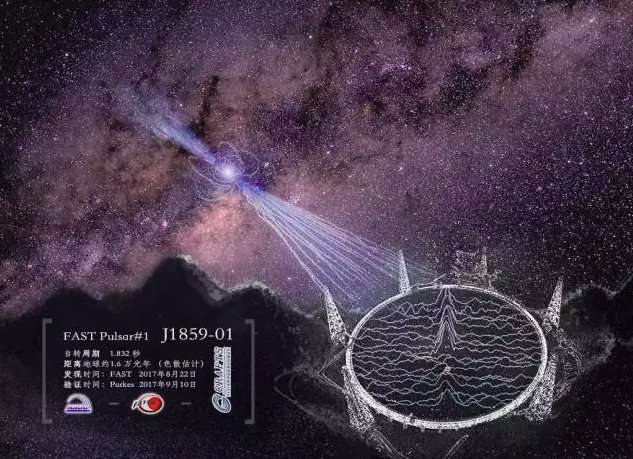Chinese scientists working on the 500m FAST telescope have announced the discovery of two new pulsars, marking the first confirmed finds from the world's largest radio telescope.
The new pulsars PSR J1859-01 and PSR J1931-02, also referred to as FAST pulsar #1 and #2 (FP1 and FP2), were detected on August 22 and 25, and were confirmed by the Parkes telescope in Australia on September 10.
“FP1 is a pulsar with a spin period of 1.83 second and an estimated distance of 16 thousand light-years, and FP2, is a pulsar with a spin period of 0.59 second and an estimated distance of 4,100 light years,” said Li Di, Deputy Chief Engineer of FAST Project at the National Astronomical Observatories (NAOC), on Tuesday.
Pulsars, which are rapidly rotating remnants of formerly massive stars, are sometimes referred to as 'lighthouses' of the universe due to their regular rotational periods and focused electromagnetic radiation emissions.
Director of NAOC Yan Jun told press that, "The two new discovered pulsars symbolize the dawn of a new era of systematic discoveries by Chinese radio telescopes".
Share this: Facebook messenger LinkedIn Copy this link to embed The integrated pulse profiles of pulsars J1859-01 and J1931-02: Panel A (upper) shows the profiles of J1859-01. Panel A (lower) shows the single pulses from J1859-01. Panel B shows the individual pulses collected from the other new pulsar J1931-02. Chinese Academy of Sciences
FAST, which stands for Five-hundred-meter Aperture Spherical radio Telescope, is the world's largest single aperture radio telescope. It is located in Guizhou Province and operated by NAOC, under the Chinese Academy of Sciences (CAS).
Construction of the gargantuan project began back in 2011 in a karst depression in Guizhou Province in southwest China, which has largely now been made a radio-quiet area.
Share this: Facebook messenger LinkedIn Copy this link to embed An aerial view of the FAST radio telescope in Guizhou Province, China. China Daily
It was completed in September 2016 and has since been undergoing trial operations, including several observation modes, such as pointing, drift scan, and tracking.
FAST is made up of 4,600 panels giving it a collecting area of 196,000 square metres, dwarfing the next largest single dish radio telescope, the Arecibo Observatory in Puerto Rico, which at 305 metres across has a 73,000 square metre collecting area.
Share this: Facebook messenger LinkedIn Copy this link to embed Fitting the final panels on China's 500 metre diameter FAST radio telescope. China Daily
Viewing the universe by collecting radio frequency radiation, FAST will be capable of detecting very weak signals from space, and could make contributions in areas such as large-scale physics of the universe and understanding the nature of dark matter.
Finding new pulsars is one of the key science goals of FAST, and the telescope has so far detected dozens of promising pulsar candidates. FAST will also seek to detect molecules such as long-chain carbon molecules in the space between stars, and survey hydrogen levels in the Milky Way and other galaxies.
It will also contribute to the international search for intelligent extraterrestrial life (SETI) by listening for signals from exoplanets and could also be used to track spacecraft involved in China's space program, such as the 2020 mission to Mars.
Over the next two years FAST will go through more operational trials until it reaches the designed specifications and gradually become an open facility for Chinese and international scholars, according to Yan.

vengeancecube on October 10th, 2017 at 14:07 UTC »
Serious question: How do they aim a telescope like this? It looks like it just gathers all the radio signals in whatever direction it's pointed (up). Do they have the ability to choose what they listen to or are they at the Earth's mercy as to what it's pointing at?
Sterling_____Archer on October 10th, 2017 at 13:18 UTC »
It is a dream of mine that one day all of the countries of the world will pool their resources together to create a massive radio telescope. Imagine if all of the resources of the largest telescopes were "combined" to create a radio telescope like... I don't know, 30 miles across.
Size is the limiting factor for these things right? That, and atmospheric interference, yeah?
pyr0bee on October 10th, 2017 at 10:56 UTC »
i wish the head scientist responsible for the telescope can see the results being announced before he passed away